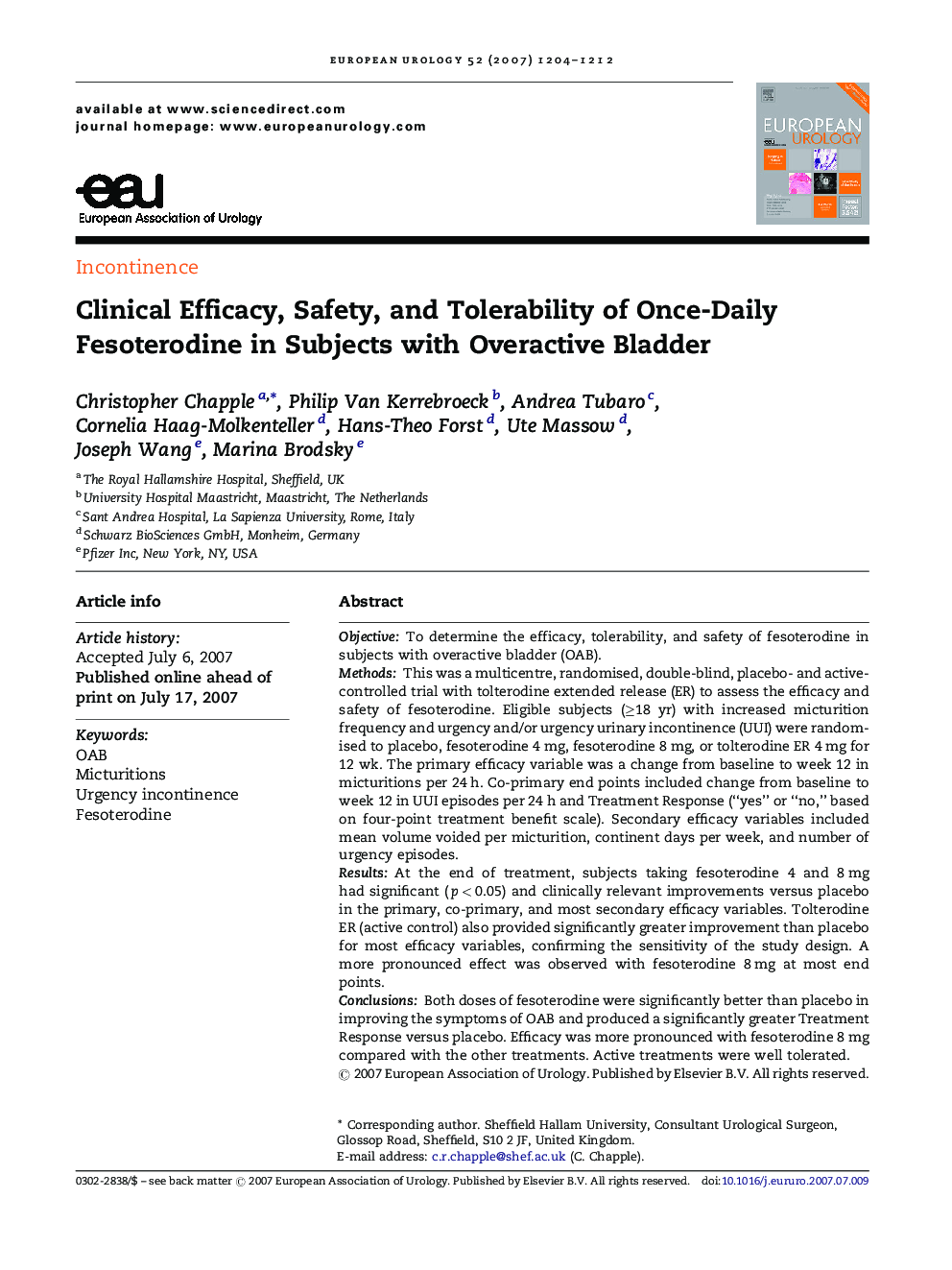| Article ID | Journal | Published Year | Pages | File Type |
|---|---|---|---|---|
| 3923373 | European Urology | 2007 | 9 Pages |
ObjectiveTo determine the efficacy, tolerability, and safety of fesoterodine in subjects with overactive bladder (OAB).MethodsThis was a multicentre, randomised, double-blind, placebo- and active-controlled trial with tolterodine extended release (ER) to assess the efficacy and safety of fesoterodine. Eligible subjects (≥18 yr) with increased micturition frequency and urgency and/or urgency urinary incontinence (UUI) were randomised to placebo, fesoterodine 4 mg, fesoterodine 8 mg, or tolterodine ER 4 mg for 12 wk. The primary efficacy variable was a change from baseline to week 12 in micturitions per 24 h. Co-primary end points included change from baseline to week 12 in UUI episodes per 24 h and Treatment Response (“yes” or “no,” based on four-point treatment benefit scale). Secondary efficacy variables included mean volume voided per micturition, continent days per week, and number of urgency episodes.ResultsAt the end of treatment, subjects taking fesoterodine 4 and 8 mg had significant (p < 0.05) and clinically relevant improvements versus placebo in the primary, co-primary, and most secondary efficacy variables. Tolterodine ER (active control) also provided significantly greater improvement than placebo for most efficacy variables, confirming the sensitivity of the study design. A more pronounced effect was observed with fesoterodine 8 mg at most end points.ConclusionsBoth doses of fesoterodine were significantly better than placebo in improving the symptoms of OAB and produced a significantly greater Treatment Response versus placebo. Efficacy was more pronounced with fesoterodine 8 mg compared with the other treatments. Active treatments were well tolerated.
